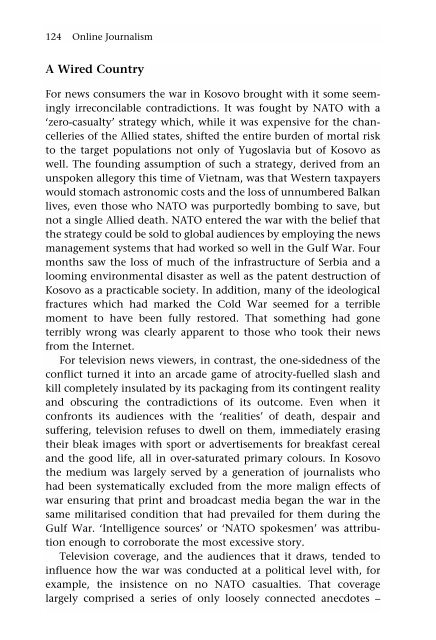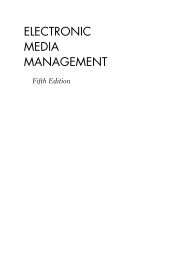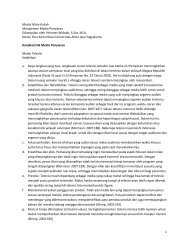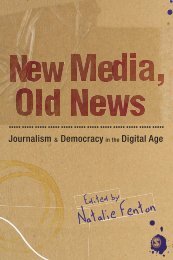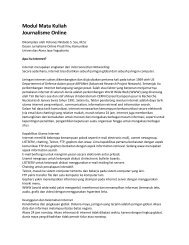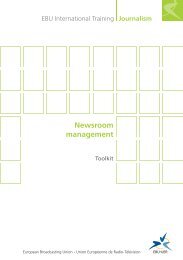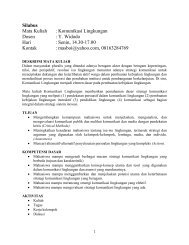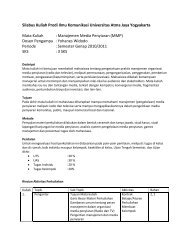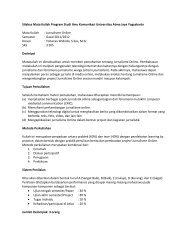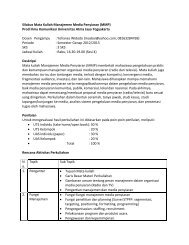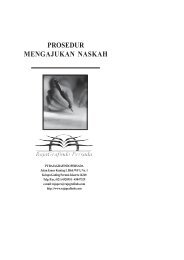Online Journalism - Ayo Menulis FISIP UAJY
Online Journalism - Ayo Menulis FISIP UAJY
Online Journalism - Ayo Menulis FISIP UAJY
Create successful ePaper yourself
Turn your PDF publications into a flip-book with our unique Google optimized e-Paper software.
124 <strong>Online</strong> <strong>Journalism</strong><br />
A Wired Country<br />
For news consumers the war in Kosovo brought with it some seemingly<br />
irreconcilable contradictions. It was fought by NATO with a<br />
‘zero-casualty’ strategy which, while it was expensive for the chancelleries<br />
of the Allied states, shifted the entire burden of mortal risk<br />
to the target populations not only of Yugoslavia but of Kosovo as<br />
well. The founding assumption of such a strategy, derived from an<br />
unspoken allegory this time of Vietnam, was that Western taxpayers<br />
would stomach astronomic costs and the loss of unnumbered Balkan<br />
lives, even those who NATO was purportedly bombing to save, but<br />
not a single Allied death. NATO entered the war with the belief that<br />
the strategy could be sold to global audiences by employing the news<br />
management systems that had worked so well in the Gulf War. Four<br />
months saw the loss of much of the infrastructure of Serbia and a<br />
looming environmental disaster as well as the patent destruction of<br />
Kosovo as a practicable society. In addition, many of the ideological<br />
fractures which had marked the Cold War seemed for a terrible<br />
moment to have been fully restored. That something had gone<br />
terribly wrong was clearly apparent to those who took their news<br />
from the Internet.<br />
For television news viewers, in contrast, the one-sidedness of the<br />
conflict turned it into an arcade game of atrocity-fuelled slash and<br />
kill completely insulated by its packaging from its contingent reality<br />
and obscuring the contradictions of its outcome. Even when it<br />
confronts its audiences with the ‘realities’ of death, despair and<br />
suffering, television refuses to dwell on them, immediately erasing<br />
their bleak images with sport or advertisements for breakfast cereal<br />
and the good life, all in over-saturated primary colours. In Kosovo<br />
the medium was largely served by a generation of journalists who<br />
had been systematically excluded from the more malign effects of<br />
war ensuring that print and broadcast media began the war in the<br />
same militarised condition that had prevailed for them during the<br />
Gulf War. ‘Intelligence sources’ or ‘NATO spokesmen’ was attribution<br />
enough to corroborate the most excessive story.<br />
Television coverage, and the audiences that it draws, tended to<br />
influence how the war was conducted at a political level with, for<br />
example, the insistence on no NATO casualties. That coverage<br />
largely comprised a series of only loosely connected anecdotes –


